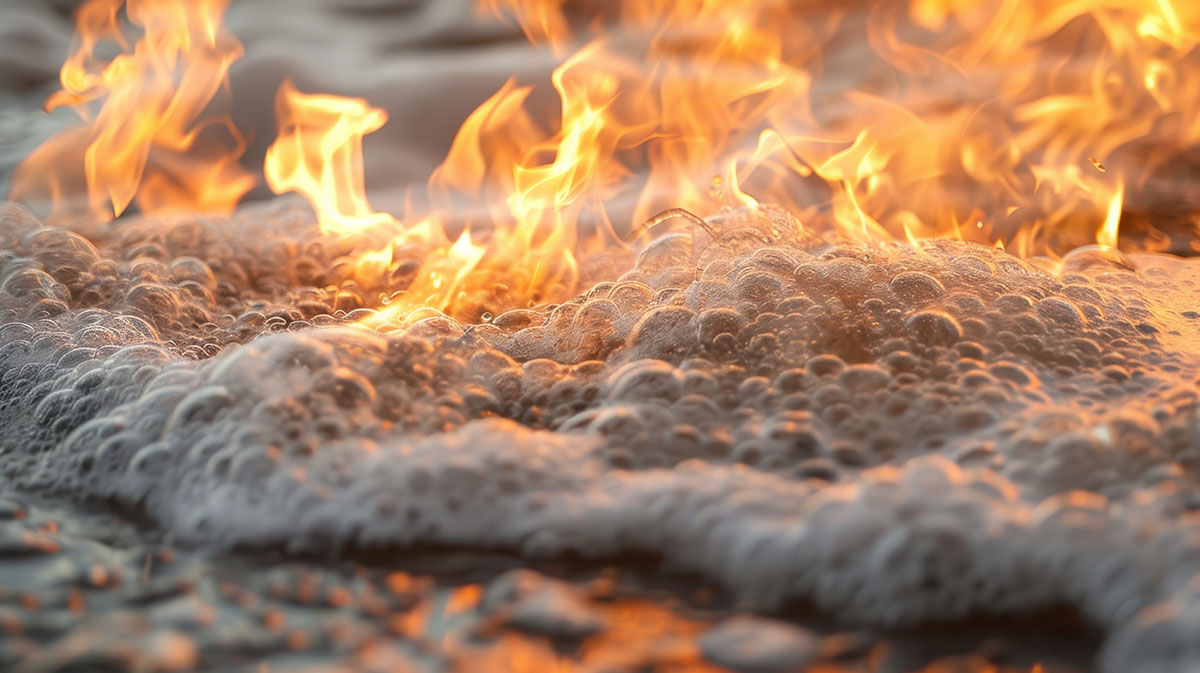Aviation Fire Safety: Transitioning to Fluorine-Free Foams

As concerns over environmental and health risks grow, the aviation industry is taking crucial steps. It is replacing hazardous firefighting foams with safer, fluorine-free alternatives.
In the 1960s, the U.S. Navy and 3M developed a fluorocarbon-based surfactant foam to extinguish aviation fuel fires. Due to its high effectiveness, the military, fire departments, and airports quickly adopted these materials. However, PFAS in these foams poses a risk to human health. To address this issue, the FAA launched a transition plan in 2020 to phase out fluorinated firefighting foams (F3) at airports certified under Part 139 of its regulations.
You can also read: Aqueous Film-Forming Foam (AFFF) Legislation in The United States.
FAA’s Strategy for Phasing Out PFAS-Based Foams
This initiative is supported by the Department of Defense (DOD) and the Environmental Protection Agency (EPA). It ensures a safe, efficient, and sustainable shift from Aqueous Film Forming Foams (AFFF) to F3 foams.
The success of this transition depends largely on the performance of new foams. These foams must meet both environmental standards and the technical requirements established in the MILSPEC F3.
Newly Approved Fluorine-Free Firefighting Foams
So far, the FAA and DOD have approved three F3 foam formulations, marking a major step toward eliminating PFAS from aviation firefighting. The approved foams include:
- SOLBERG® 3% MIL-SPEC (SFFF): The DOD identified this as the first F3 agent to meet its performance standards. Perimeter Solutions developed this PFAS-free foam, which is biodegradable and free from siloxanes. It forms an effective vapor-sealing layer to prevent re-ignition.
- BIOEX ECOPOL A3+: The FAA approved this as the second F3 agent for airport use. BIOEX developed this biodegradable, environmentally friendly formulation, which uses an advanced surfactant blend to provide rapid-fire knockdown.
- Avio Green Mil 3%: Both the DOD and FAA recognized this as the third approved F3 agent. National Foam developed this fully biodegradable foam, which offers burn-back resistance comparable to AFFF.
Training for Effective F3 Foam Deployment
Although F3 foams meet technical and environmental requirements, they do not form the protective layer characteristic of AFFF foams. For this reason, the FAA emphasizes proper application techniques to prevent accidents. To support correct implementation, the FAA has released two training videos for personnel responsible for these processes.
Check out the videos in this link.
The Growing Shift Toward PFAS-Free Firefighting
While the transition remains voluntary under current regulations, at least 23 states have enacted laws requiring the switch to F3 foams. Additionally, several manufacturers have started discontinuing AFFF production, accelerating the shift toward PFAS-free airports. This plan not only enhances safety during fire incidents but also reinforces commitments to sustainability and public health protection.
